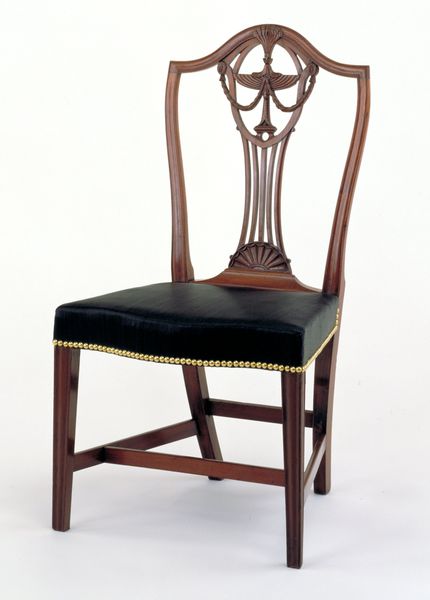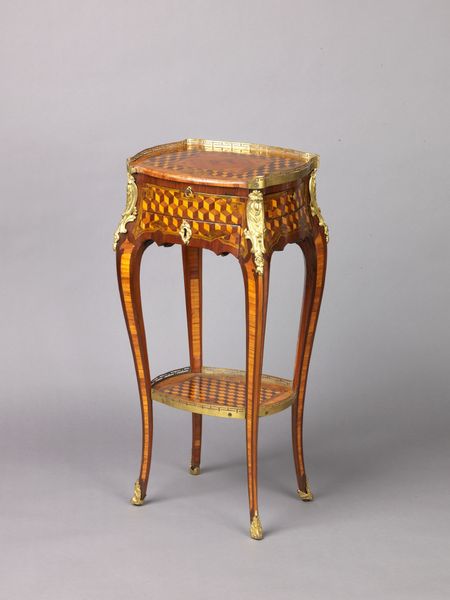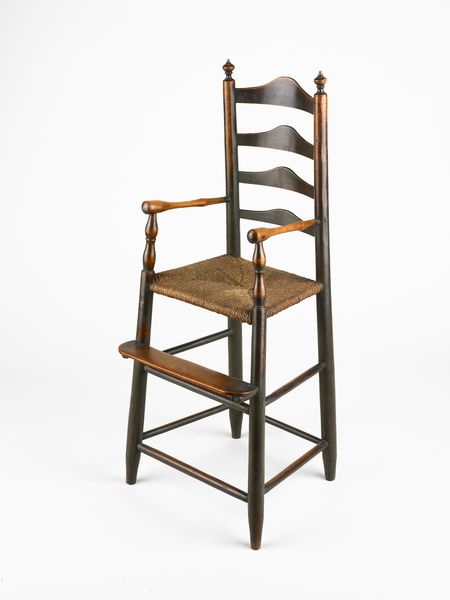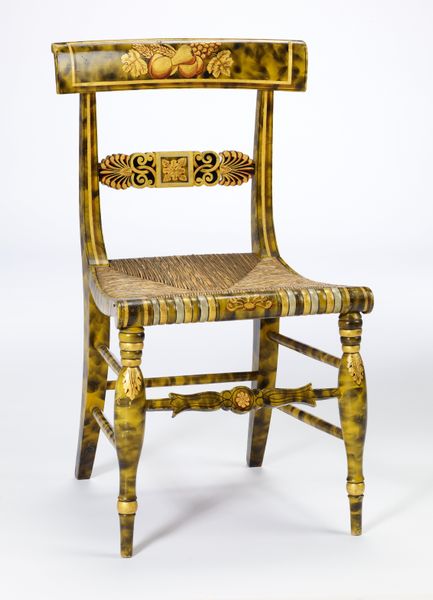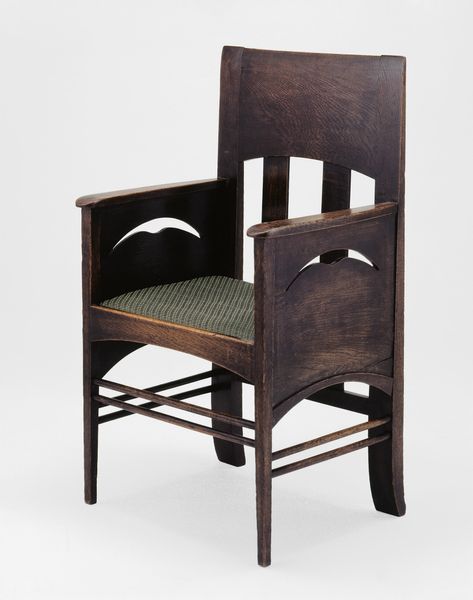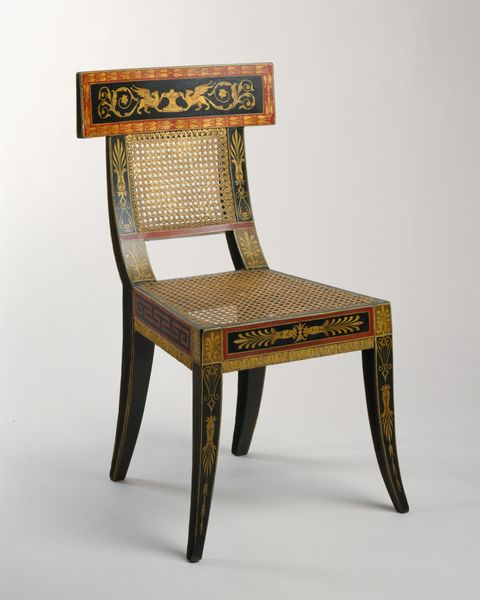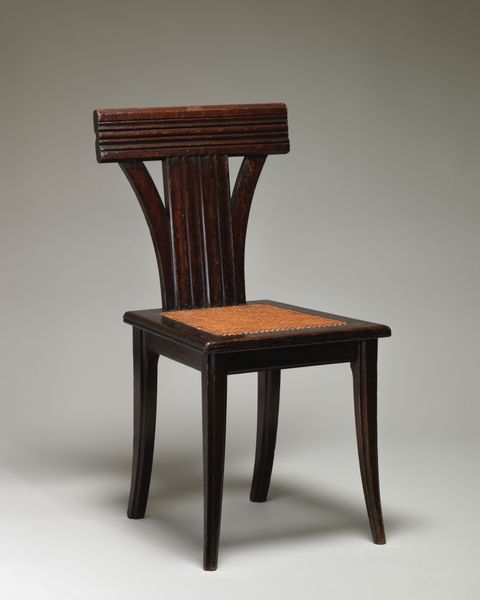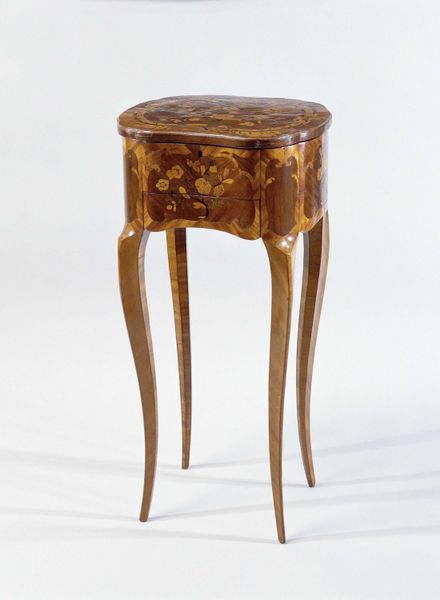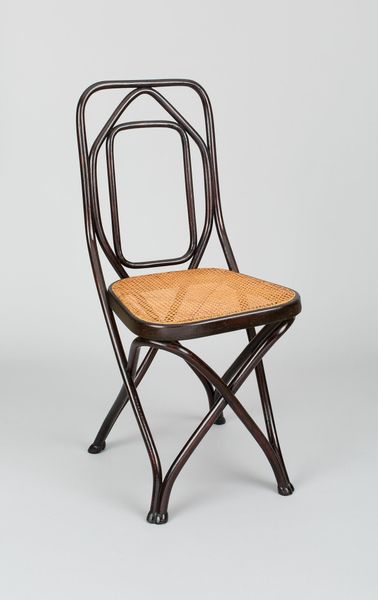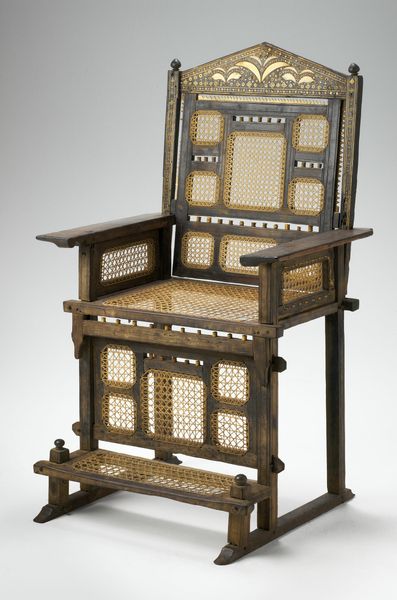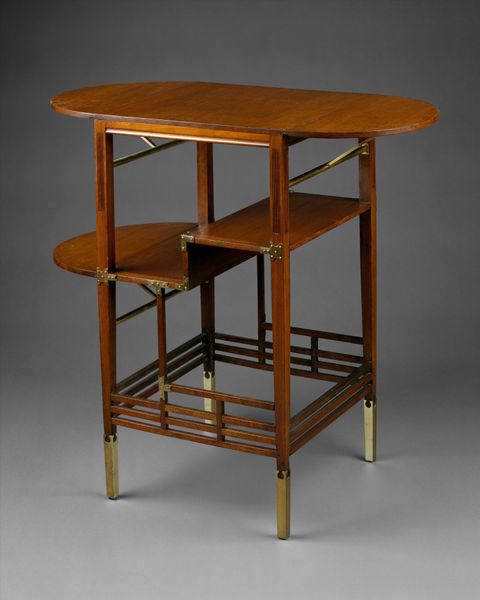
wood
#
art-deco
#
furniture
#
geometric
#
wood
#
decorative-art
Dimensions: 44 x 26 1/2 x 13in. (111.8 x 67.3 x 33cm)
Copyright: No Known Copyright
This telephone stand was crafted in France by Abel Faidy, who lived until 1965. The way those triangles converge and radiate outward, it's like a sonic bloom made solid, frozen in wood. Faidy’s embrace of sharp angles and bold contrasts feels very contemporary. I imagine him in the workshop, carefully arranging each piece to create these striking graphic patterns. Look at how the light and dark woods play off each other, almost vibrating. It's hard to resist the impulse to reach out and feel the surface. You can imagine the texture of the wood, the precision of the cuts, and the joinery. It makes you think about how the object exists in space, and how someone, someday, would reach out to touch it. When I look at it, I am reminded of Josef Albers and his Homage to the Square series. There's a similar exploration of form and color, though here it's translated into the realm of functional art. This piece reminds us that art is an ongoing conversation, a dialogue across time.
Comments
minneapolisinstituteofart almost 2 years ago
⋮
The American Art Deco movement is conveniently divided into two principal phases: Zigzag Moderne of the 1920s and Streamline Moderne of the 1930s, the first reflecting the dominance of the triangle and T-square and the second the French curve and the compass. Few works capture the essence of the Zigzag Moderne better than Abel Faidy's telephone cabinet and matching side chair. Among the contributing factors to this delightfully fragmented design were the interplay of light and shadows seen in America's new vertical cityscape (overlapping skyscrapers), Cubism, the mania for Egyptian and South American cultures (pyramids and ziggurat-shaped temples), and even electricity (jagged lighting bolts). The doors of the cabinet are wired to open when the candlestick telephone, housed inside, rings.
Join the conversation
Join millions of artists and users on Artera today and experience the ultimate creative platform.

